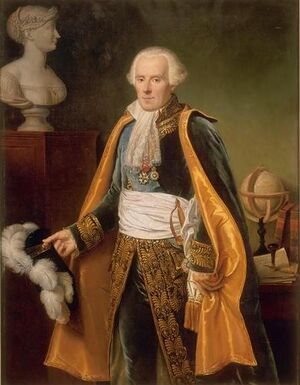Pierre-Simon Laplace (nonfiction)
Pierre-Simon, marquis de Laplace (/ləˈplɑːs/; French: [pjɛʁ simɔ̃ laplas]; 23 March 1749 – 5 March 1827) was a French scholar whose work was important to the development of mathematics, statistics, physics, and astronomy.
He summarized and extended the work of his predecessors in his five-volume Mécanique Céleste ("Celestial Mechanics") (1799–1825). This work translated the geometric study of classical mechanics to one based on calculus, opening up a broader range of problems.
In statistics, the Bayesian interpretation of probability was developed mainly by Laplace.
Laplace formulated Laplace's equation, and pioneered the Laplace transform which appears in many branches of mathematical physics, a field that he took a leading role in forming.
The Laplacian differential operator, widely used in mathematics, is named after him.
He restated and developed the nebular hypothesis of the origin of the Solar System and was one of the first scientists to postulate the existence of black holes and the notion of gravitational collapse.
Laplace is remembered as one of the greatest scientists of all time. Sometimes referred to as the French Newton or Newton of France, he has been described as possessing a phenomenal natural mathematical faculty superior to that of any of his contemporaries.
He was Napoleon's examiner when Napoleon attended the Ecole Militaire in Paris in 1784.
Laplace became a count of the Empire in 1806 and was named a marquis in 1817, after the Bourbon Restoration.
In the News
Fiction cross-reference
Nonfiction cross-reference
- Jean le Rond d'Alembert (nonfiction) - academic advisor to Laplace
- Mathematician (nonfiction)
- Physicist (nonfiction)
External links:
- Pierre-Simon Laplace @ Wikipedia

